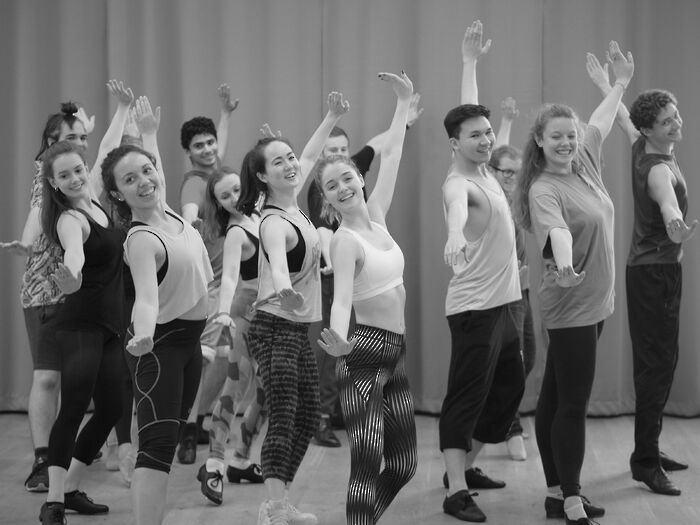Northanger Abbey Preview
The adaptation of this book has been true to its source material but innovative in its performance

This week, Jane Austen’s Northanger Abbey (1817) is brought to life in the stunning Selwyn College Chapel, offering Regency period fun and a classic coming-of-age story with some creative twists. Director Maddy Trepanier takes up the ambitious task of adapting Austen to the stage in ways that promise to be innovative and unconventional.
Watching the cast rehearse in the Chapel on a windy, rainy night – a setting the imagination of Catherine Morland would find most appropriate – Trepanier, who adapted the novel into script form herself, explains how they have, “tried to twist the ordinary world of a period drama in various ways; the design is not totally period,” and have, “utilised a good deal of physical theatre’ in the production. We are promised live music – a string quartet and the Chapel’s organ – candles, Regency costume and even puppetry!” Trepanier describes this as the ‘reality warp’ that, “becomes more prominent as Catherine’s fantasies lead her further and further astray from reality”.
"They seemed to effortlessly portray these comic and ultimately realistic characters, underlining the sense of bathos Austen creates as Catherine’s grand illusions are gradually dismantled"
Although an unconventional theatre space, the Chapel appeared to offer great freedom to the actors, who I watched delight in creative ways to move around; in and out of the pews in which the audience will be sat. The seating is set up so that, unlike in traditional performances where the audience broadly share the same view of the stage, each audience member will experience and view the play’s action slightly differently. And in a story where Austen gently satirizes romanticising Gothic grandeur, the setting appears to be rich in connotations – it captures the splendour of Catherine’s misguided fantasies, as well as itself ironically evoking this glorification of past, Gothic beauty with the style of building itself – being neo-Gothic, built in 1895, almost 80 years after Northanger Abbey was first published.
This exciting atmosphere could not be achieved without the liveliness, wit, and energy of the cast. They seemed to effortlessly portray these comic and ultimately realistic characters, underlining the sense of bathos Austen creates as Catherine’s grand illusions are gradually dismantled. The sharp juxtaposition between the protagonist’s reality and her romantic delusions is only heightened by this grand, beautiful setting; the audience can inhabit both worlds – Catherine’s rich imagination, and her less grand, but just as compelling, reality.
"This narration style also draws attention to many questions surrounding form"
The protagonist herself is played by Kay Benson, who easily captures Catherine’s endearing personality, working particularly well alongside Ryan McMahon, playing Henry Tilney. The two have an easy, natural chemistry, perfectly balancing the serious and the playful throughout in their interactions, which, in a similar vein, is what Trepanier promises with the entire adaption.
Alongside these lively dialogue scenes is some narration, most frequently from Benson and her character herself, but also from the other characters, paying tribute to Austen’s innovative use of free indirect speech; a technique in which the voices of the omniscient narrator and minds of the character mingle.
Trepanier says she took inspiration from the narration styles of productions such as Gatz and Natasha, Pierre and the Great Comet of 1812. This narration style also draws attention to many questions surrounding form. Archie Williams, playing Mr Allen, points out that, “it’s rare to see Austen adapted for the stage”, with, “most adaptions we think of being put into film”; a form in which we can zoom into and stay on character’s faces, picking up the details we miss from the absence of the third person narrator. These narration scenes mean that the audience do not miss information and character insight they might not have had access to in a production consisting almost entirely of dialogue, and that Austen’s distinctive tone and style is not lost.
Streamlining the entire plot of Northanger Abbey, even as the shortest of Austen’s novels, into something just under two hours is no mean feat, and Trepanier is keen to do so, “while still feeling like [she’s] getting the intricacies of the plot”. Another innovative twist taken faced with difficulties of form is the new, original pieces of dialogue written by Trepanier herself, necessary when, “Austen glosses over some scenes completely, which works fantastically as a kind of novelistic sleight of hand, but of course doesn’t work dramatically, so I’ve filled in some of the gaps along the way.”
Northanger Abbey is undoubtedly an ambitious project, yet the challenges faced in creating such an adaption seem to be actively embraced by this talented cast and crew. They experiment with form and setting in ways that promise to do justice to the originality and inventiveness already found in Austen herself. The rich, grand atmosphere of the play invites the audience to be dazzled in the way Catherine is, yet without losing the sharpness of its satire, capturing the playfulness and lightness of touch that will undoubtedly leave us wanting more.
 News / Hundreds of jobs to be cut at Cambridge University Hospitals1 April 2025
News / Hundreds of jobs to be cut at Cambridge University Hospitals1 April 2025 News / Caius clock hand returned nearly 100 years after student prank31 March 2025
News / Caius clock hand returned nearly 100 years after student prank31 March 2025 Comment / More Cambridge students should study abroad 1 April 2025
Comment / More Cambridge students should study abroad 1 April 2025 Features / Cloudbusting: happy 10th birthday to the building you’ve never heard of30 March 2025
Features / Cloudbusting: happy 10th birthday to the building you’ve never heard of30 March 2025 News / Uni partners with controversial Hong Kong university2 April 2025
News / Uni partners with controversial Hong Kong university2 April 2025



